Climate ChangeandScience and Society
What climate policy can learn from COVID-19
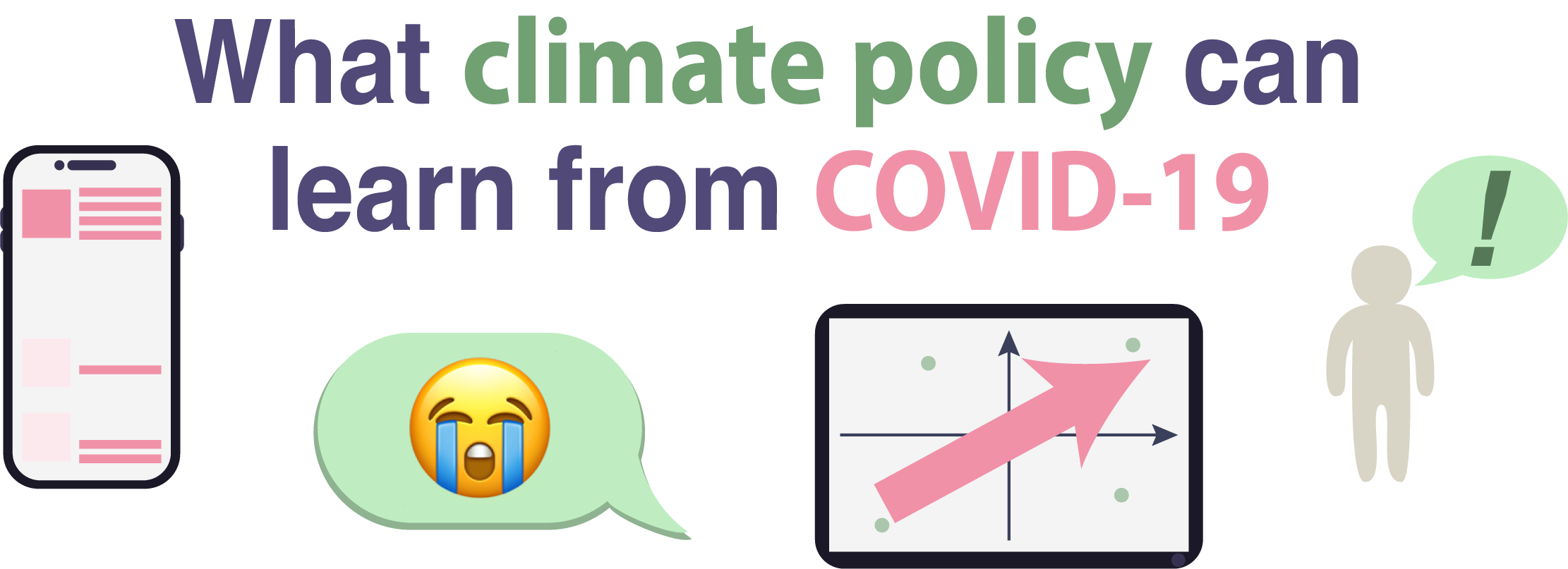
“Trust Science” has become an important rallying cry in liberal conversation, from issues that range from COVID-19 to climate change and other forms of environmental damage. Presumably, the “trust in science” is centered around trusting physical realities: a virulent disease that can be passed between people, the accumulation of carbon dioxide and other blackbody reflective gasses are causing our planet to warm, a changing climate threatens food security, conflict, and ecosystem health. However, “trust science” can be an appeal to defer to scientific authority itself rather than a structured critique of phenomena using scientific methods and current findings. This appeal, while well-meaning, can be baffling to science practitioners who know not to trust even their own results absolutely, and may have adverse results. If “trust science” encompassed methods from all of science, would climate change be consistently relegated to a “second-class” political issue, punted backwards when more immediate issues arise?
Truly invoked, a trust in sciences should also entail a trust in cognitive and social science. For instance, psychological and sociological science has made remarkable progress in illuminating the psychological biases that shape our perception of risk and behavioral implications. A summary of these findings is perhaps the following: humans are bad at judging risk; or, more precisely, humans judge risk in a very different way than we believe we do. We tend to consider ourselves as rational, straightforward, and numerical. In actuality, we carry a lot of bias into how we perceive our environments, underlying information, and the results of future decisions. Thus, the way humans evaluate – and therefore define – risk requires critical examination. This article endeavors to carry the torch forward from the priorities elicited by the noble starting point: to “trust science.” It employs a modern understanding of risk evaluation as a framework to understand current society-scale phenomena in order to center attention where we believe it is most crucial: climate change. Specifically, the risk evaluations that shape climate policy will be compared and contrasted to those that shaped the response to COVID and used to furnish the reader with the tools to discuss climate change in a way that highlights its importance.
There are four classes of decision metrics that shape the way humans evaluate risk: saliency, anecdotal bias, social and bandwagon effects, and information biases. Each strategy has merit evolutionarily, but each can contribute to misevaluation of the types of risks we face today.
I. Saliency
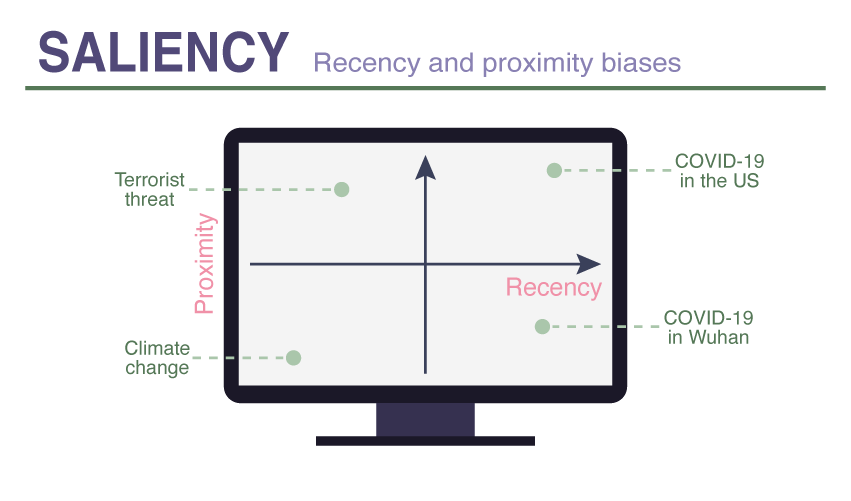
A person cannot focus all their attention and mental energy on all possible risks – it quickly becomes overwhelming. Instead, people devote their attention to the risks or events with the most salience: the visceral and emotional reaction that we have to an outcome of an event. Negative outcomes that can be visually mapped onto the human body have higher salience than those that cause abstract harm. With saliency bias comes a recency bias and proximity bias: People judge threats to be greater if they can happen sooner (recency) and closer (proximity) to them. For example, a lion that escapes your local zoo can maul someone, so it has higher salience, recency, and proximity than a nearby city’s poor air quality, which may cause subtle and chronic harm. These biases may make sense if one considers the dire threats early humans routinely faced and had immediate control over.
Despite the sense they make in an evolutionary context, these biases create problems in collective decision making because we tend to respond to threats with greater saliency regardless of their probability of occurring. An illustrative example is America’s response to terrorism and violent threats: It is estimated that America spends roughly five million dollars per terrorist victim, whereas the average American is far more likely to die of suicide, driving accidents, and even a falling vending machine. Indeed, when COVID struck, America was undersupplied with ventilators but had an enormous anthrax stockpile.
COVID scores high in terms of its saliency, recency, and proximity to humans. COVID could get anyone sick, no matter their social status, and has the potential to kill people relatively quickly. Thus, America’s COVID case count feels relevant. However, within the global progression of COVID, Americans didn’t seem to care much when it was centered in China: Wuhan’s shutdown, a faraway event, was below the story of the first Trump versus Biden debate in the New York Times’ January cover stories. Its proximity was much lower when it was centered primarily in China, and thus so was its perceived threat. The difference in perceived threat of the virus modulo location of outbreak is helpful in illuminating just how subjective the societal determination of its risk was to an array of unacknowledged factors.
By contrast, climate change is relatively low in terms of salience, recency, and proximity. It is a slow-moving phenomenon that has been publicly discussed for decades without displaying major, obvious effects. Climate change is also incredibly abstract, complex, and diffuse in both cause and effect. For example, climate change itself is an accumulation of atmospheric gasses caused by a myriad of emitting sources, but we understand it through the countless ways planetary processes are disrupted. We understand climate change by thinking hard about its absence, which is hard: Feeling intuitively that there are currently more hurricanes or more wildfires with climate change than without climate change requires imagining a hypothetical reality. Its diffuse range of effects may also cause confusion: Climate change has been used to explain increases in marine die-offs, disease spread, crop loss, and flooding in Bangladesh, so in popular parlance it is probably difficult to determine what exactly is or isn’t climate change. And, until recently, climate change had poor proximity: We can look toward disappearing Caribbean islands or a melting north pole, but these are far away from the industrialized countries causing the crisis.
Thus, climate change seems forever rooted in a future place far from the United States, even though it most certainly isn’t. Climate change is creating widespread drought in the Western United States, disrupting US agriculture, and superpowering hurricanes that cause billions in damage to US cities. The Western United States’ 2020 fires created America’s first “climate refugees,” and they will not be its last; the United Nations estimates close to 1.2 billion climate refugees will be created by 2050, many of these within the United States. Despite saliency, proximity, and recency biases acting contrary to perceptions of the climate crisis, the reality is that the climate crisis will have very serious and very massive effects all over the globe, as our planet is densely interconnected.
II. Anecdotal Bias
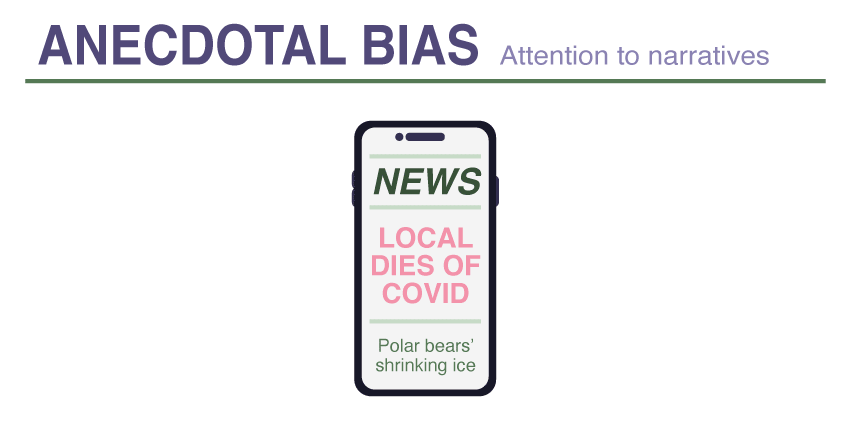
Another cluster of biases that plays a role in how effective information is at conveying risk includes anecdotal bias and availability bias. We are more likely to pay attention to narratives than to numbers. Stalin knew this well, reportedly saying “one death is a tragedy, whereas a million are a statistic.” Indeed, he leveraged this in the state media to constantly turn the Ukrainian famine from a series of stories into a dizzying array of statistics.
In terms of anecdotal bias, the COVID pandemic has dramatic narratives that catch the public attention. Newspapers first told the story primarily through narratives, with the New York Times featuring stories such as “Coronavirus ravages 7 members of a single family, killing 4” or “He drove her to the hospital. She gave him the Coronavirus”. In my own experience, gay San Francisco social media circles were abuzz with the stories and pictures of a man who went to Miami’s circuit party when the lockdowns were starting, got sick enough to go to the ICU, and returned emaciated. At the time, it seemed to me that everyone knew a friend of a friend who was seriously ill from COVID or who had died.
However, as important as individual stories about COVID were, they do not say much about the aggregate phenomenon, and it is important to keep this in mind. The country with the highest overall proportion of death is Peru at .5 percent. If you had a coin with a .5 percent chance of being heads, you would have to flip it an expected 200 times before heads appeared. Would we ever be so lucky that only .5 percent of our children’s generation feels the food insecurity, political upheaval, and extreme weather of climate change? This is not to say that the risk of COVID is necessarily overstated, but that, because of cognitive biases, the risks associated with climate change are dramatically understated.
Because climate change is abstract, it is very difficult to frame a simple narrative around “that friend who suffered from climate change.” Early efforts to tell the story of climate change used polar bears as a “better than nothing” face for the crisis. Polar bears are recognizable, charismatic mammals that can pitch the phenomenon relatively well (“their ice is shrinking!”). However, the effort had the effect of making environmentalists look out of touch with problems closer to US voters, and making the problem seem far away. Until climate change starts directly affecting people close to us, or until more concrete problems, like high energy bills, are framed in terms of climate change, many will not have a reason to care.
III. Social and Bandwagon Effects
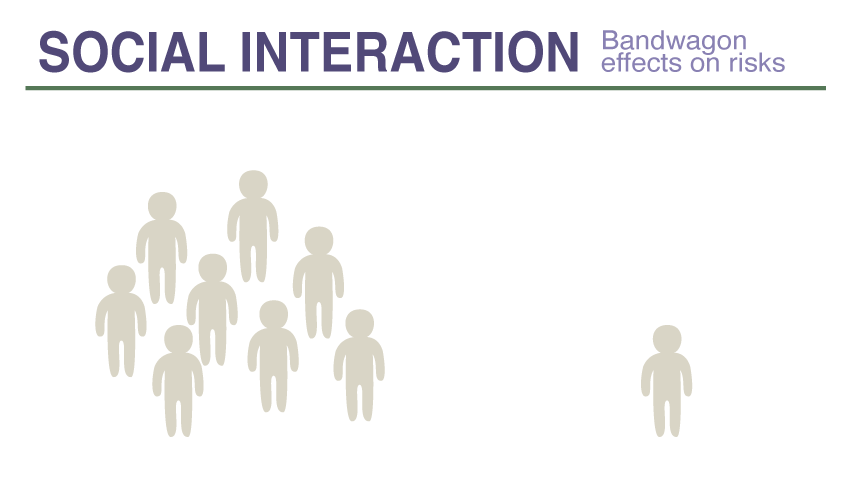
Social interactions are important in the expressions of many forms of bias, especially in the social communication of risk, also known as the bandwagon effect. We are more likely to believe that something is risky if those in our close social circle also believe it to be risky, irrelevant of the direct risk that thing actually poses. Bandwagons are one reason why decision making in large organizations is difficult, as they facilitate groupthink and make it difficult to assess risk.
Bandwagons have reared their heads in interesting ways throughout history. “Koro”, or “Turtle-penis syndrome”, is a psychological epidemic that struck independently throughout Asia, Africa, and Europe where clusters of villagers grew to believe that their penises were shrinking into the body for a variety of reasons including witchcraft, diet, and immigrants. Spread through social networks (Hainan, China, 1948, 1955, 1966, for example) including newspapers (Singapore, 1967; Europe, 1880) and often reliant on xenophobic anxiety (Thai newspapers blaming Vietnamese food), tens of thousands experienced anxiety, fear, and sexual dysfunction from believing in koro. Crucially, koro does not have a physical biological cause; only psychological. Nevertheless, there were very real consequences: Tens of thousands of men who had no history of sexual pathology developed enduring mental illnesses; even more extreme, an epidemic of koro that started in Nigeria in 1997 spread through Ghana and Ivory Coast to Benin and caused the murder of five people by vigilantes accusing them of penis theft.
Koro is an interesting foil to COVID, as it demonstrates rather provocatively that each epidemic has a social reality in addition to a physical reality. How much of societal response is based in physical vs. psychological factors? And is it possible for physical factors to be imagined or reinforced through placebos? Virtually no societal harm occurs in a communication vacuum.
It is important to note that journalists are not immune to cognitive biases, and these biases shape a lot of what they communicate. What journalists read, discuss in professional circles, and think they should be reporting on drives what they pitch and what editors progress. Once assigned to a story, journalists then tend to seek narrative arcs, in which individual protagonists are often helpful and anecdotal biases abound. Thus, just because major newspapers give a lot of airtime to a specific risk does not mean that it would rank high on some “more objective” metric such as total deaths or aggregate diminished lifespans. (For more information, check out the book “Journalism and the Philosophy of Truth.”)
Climate change currently suffers from a negative bandwagon effect in mainstream circles. From the beginning, messaging around climate change has been conflicted, subverted, and often set by those with established interest in preventing widespread activism. Indeed, as recently as 2016, an anchor for the Trump-Clinton presidential debate excused the lack of a question on climate change, saying, “We didn’t get to it..” Channels of social communication around climate change lack the peer-to-peer urgency that other social issues have, and so many people’s first impressions of it were underwhelming. Thus, it is important to contextualize a lackluster climate policy within headwinds to its own social risk communication, not because climate change is definitively a less existential threat.
IV: Information biases
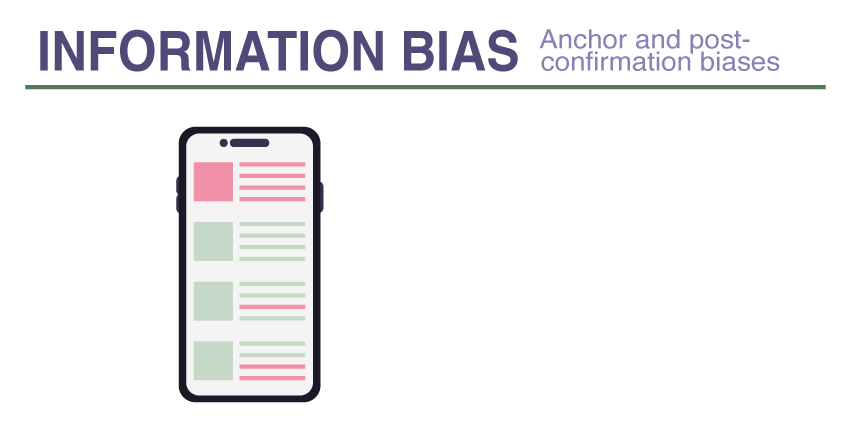
The media choosing not to cover climate change stories only feeds further into a final class of bias affecting the ways in which we consider the risk of climate change: information biases – the ways in which we learn about and reinforce our understanding of phenomena. This includes the well-known anchor bias. We are likely to believe the first framing we hear about a phenomenon, which explains why the initial offer for salaries, home values, and other purchases is strongly correlated with the final offer. After we form our opinions, they are unlikely to change due to post-confirmation bias. We tend to focus on information that confirms our existing beliefs and act based on our beliefs, tending not to accumulate experiential evidence that might disprove our beliefs. For example, if one believes the subway to be a carrier of COVID (even though evidence for this is largely absent), one would rarely take the subway and therefore would not accumulate subway ride experiences in which they do not contract COVID. Indeed, we tend to filter even neutral information through a lens that strengthens existing perceptions.
Anchor and post-confirmation biases are hugely difficult biases to overcome when it comes to large and complex phenomena in which scientific understanding changes over time. For COVID, these biases may have been deadly: During the COVID pandemic, the Center for Disease Control and Prevention repeatedly redrew lines around important and non-important safety precautions as new evidence came in. In May of 2020, the CDC stated that COVID was not a food-borne illness, and in August of 2020, the CDC stated that it was not passed through surfaces. However, organizations at every level of society (transport agencies, airplane companies, restaurants) continued to spend money cleaning surfaces and packaging food. Not only did this burden low-wage and minority workers, but it also incurred societal costs that could have been efficiently allocated toward paying people to stay home from work. It also facilitated “pandemic burnout” wherein governments focused people’s limited capacity to adapt and follow guidance on the wrong guidelines. Even though we now know that people are 19 times more likely to contract COVID inside than outside, cities maintained outdoor mask mandates, leading one Atlantic writer to describe restaurant goers demasking as being similar to people putting on seat belts in parked cars and then unbuckling when they started to drive. Many of these formal guidelines persisted through lawmakers’ anchor bias and address the population’s anchored confirmation bias, even when scientific consensus had outgrown these ideas.
As a PhD student in science, I am often concerned to find that non-scientists tend to see science as a monolithic producer of truths rather than a vibrant and ever-changing conversation. The view of science as perfect is understandable given that most people experience it through the lens of high school textbooks, where pedantic narratives lay down engraved theories tested centuries ago. However, the state of science when it is produced is not only imperfect and diverse but also, in many notable cases, just plain wrong. This is not localized to the lower tiers of science but also the top: About 33 of the 50 most cited articles in the Lancet could not be reproduced due to many factors, including medical researchers not using advanced statistical practices, a pressure to publish, bias toward positive results, and the ability to test more things.
V. Using understanding of these biases to frame climate change better
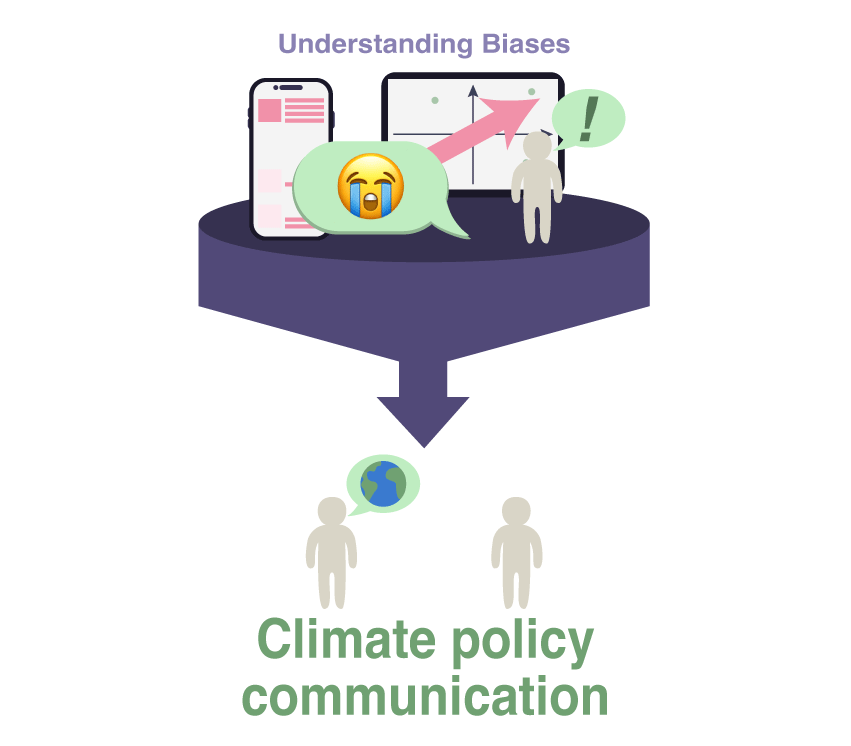
Considering the way climate change is discussed in the media, or presented in social circles, the sense of risk it instills in many is very low. However, considering the cognitive biases at play allows us to look past them and see the truth of the situation that is normally clouded by our biases: Climate change, by more unbiased metrics, is the most crucial and existential threat that we as a species have faced.
One metric to consider is the cumulative human death rate. Although it is difficult to estimate the true number of deaths from climate change, even the World Health Organization’s estimate of 250,000 a year through 2050 (i.e. about nine million) is more than the current death tally of COVID (about four million) (https://www.cdc.gov/nchs/fastats/injury.htm). And, top climate scientists have called the WHO estimate a “wild underestimate” given climate change is estimated to lead to around 1.2 billion refugees by 2050, exacerbate conflicts like the Syrian war and Nigerian Boko Haram conflict, and lead to massive disruption in agricultural products.
These factors, especially the disruption of agricultural products, can also lead to economic downturn, another important metric of impact and risk to consider. Here, climate change is estimated to take $15 trillion off the world gross domestic product by 2050 and is largely seen to be one of the most significant disruptors of markets that we have witnessed. Although COVID also had a major effect on the markets, leading to an average market contraction of 5 percent, this is less than $5 trillion and has the chance of rebounding within 5-10 years.
A third possible metric is, literally, disease prevention. Climate change is likely to spread disease at rates we have never seen before, with more mosquitos bred by greater humidity. Scientists studying permafrost melt fear the release of old specters like the bubonic plague from cold captivity. Cholera and other water-borne diseases may be more prevalent given changes in water ecology.
More complex societal effects are also important to consider, such as the structural harm and oppression that people of color face. Indeed, COVID appeared to hit POC communities harder than whiter, more affluent communities who could stay home and access greater care. However, people of color face a very serious and real threat by climate change: Indeed, the bulk of harm will be felt by the poorer, darker, and agriculturally bound citizens of less affluent nations. Bangladesh is already ground zero for climate change. It is likely that much of the estimated 1.2 billion refugees will be poor people of color displaced from their farmland by poor harvest. In this way, climate change is a massive human rights issue perpetuated by majority-white nations. The world responded with surprising speed to the urgency of COVID: We accepted deep and significant changes to the way we moved, worked, and interacted within months to alleviate at least some of the threat. We are thus capable of radical and transformative action when we feel our way of life is threatened. Climate change deserves the same deep, structural response.
Absent state action, individuals must make up the difference. If you are at a point in your career where you have the ability to change your sector, then green energy, climate forecasting, and climate policy could use you. If you have any activism to spare, the Sunrise Movement, Extinction Rebellion, and Third Act are waging brilliant and insightful climate change campaigns. Sunrise Movement and Extinction Rebellion are youth climate change activist networks, focused on direct action and supporting the campaigns of climate hawk politicians, for example, notably driving the re-election of Ed Markey. Third Act, meanwhile, is Bill McKibben’s latest brainchild: An organization of elders coordinating their financial and investing power to help influence markets toward decarbonization. If you have economic slack, carefully consider how you spend your dollars – in many places you can choose to get most of your energy from green sources for very little extra. Consider going vegetarian at least one day a week, as meat is one of the most potent contributors to climate change.
If nothing else, talk about climate change – bring it up in conversation, spread awareness, and help surface the topic in people’s mind and ripple it across the political spectrum. Use knowledge of cognitive biases as tools to influence risk perception. We can use salience, proximity, and recency to draw people’s attention to changes nearby that affect them directly. We can use anecdotes and available evidence to tell stories of displaced farmers or fire victims. We can use social bias to inform others that we believe that climate change is important. Finally, we can instill an anchor in the younger generation that climate change will threaten their futures and is here to stay.
We need to carefully consider the response we wish to use with climate change and how consistent it is with our values. If the same values that led us to shut down economies over COVID govern what we would like our response to climate change to be, then it is our duty to act like our lives depend on it.
------- Lucas Spangher recently graduated with a Ph.D. in Computer Science from UC Berkeley. He is currently a Visiting Researcher at Google Research and will be entering a position as a Postdoctoral Scholar engineering controls for nuclear fusion at the Massachusetts Institute of Technology's (MIT) Plasma Science and Fusion Center.
Design by Vanha Pham




